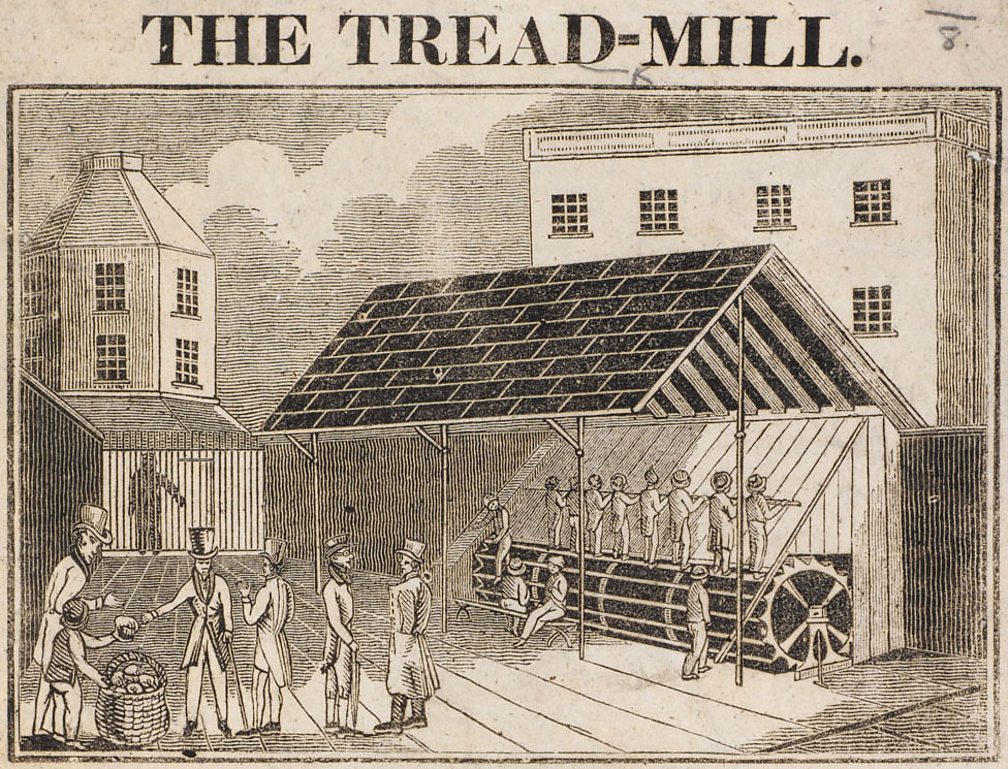Did You Know: Treadmills Were Originally Created To Punish Prisoners
Now, we go on treadmills by choice.
Originally known as a treadwheel, the first treadmill was invented by Sir William Cubitt in 1818.
However, it was initially designed for a completely different purpose than exercise.
It was created as a form of punishment and a means of prison labour.
The treadwheel, which resembles a set of stairs attached to a giant wheel (kinda like a StairMaster today), was installed in prisons and used as a form of hard labour.
Cubitt thought the labour would help "reform stubborn and idle convicts", according to BBC.
Prisoners were required to step on the giant wheel and climb the stairs for at least six hours daily — the equivalent of 5,000 to 14,000 vertical feet
Every two minutes, a bell would ring to indicate that it was time for one prisoner to take a break. Meanwhile, another prisoner would take their place. This cycle would then repeat.
By 1842, the treadwheel was used in several prisons across England, with one of the largest in Brixton Prison.
The treadwheel at Brixton Prison, as depicted in an 1817 London broadside held by the British Library, offers a glimpse into the historical development of these early exercise devices.
Image via British Library/BBCAs inmates walked on the steps of the revolving wheel, their repetitive motion would turn gears or power mills for grinding grain, pumping water, or performing other tasks
The power generated by the treadwheel was commonly used to grind corn and pump water, although some served no purpose at all other than punishment.
It was deemed a harsh and physically demanding form of labour. The exertion on these treadwheels, when combined with a poor diet, frequently resulted in injuries, illnesses, and, tragically, for some, an early grave.
Despite that, many in Britain and the US saw it as a positive solution for prison idleness and defiant inmates.It was believed that subjecting anyone to the treadwheel would deter them from committing further crimes.
However, penal treadwheels were eventually abolished in 1902.
Over time, it became evident that these treadwheels did not effectively deter individuals from committing crimes.
According to Encyclopedia Britannica, the use of treadwheels was abolished in Britain by the Prisons Act of 1898.
Humanitarian concerns and reform movements also advocated for changes in the penal and criminal justice system. The use of treadwheels was eventually replaced by more modern and less physically demanding equipment.
And by the late 19th century, treadwheels evolved into exercise-focused treadmills, marking a shift in the use and purpose of these devices.


